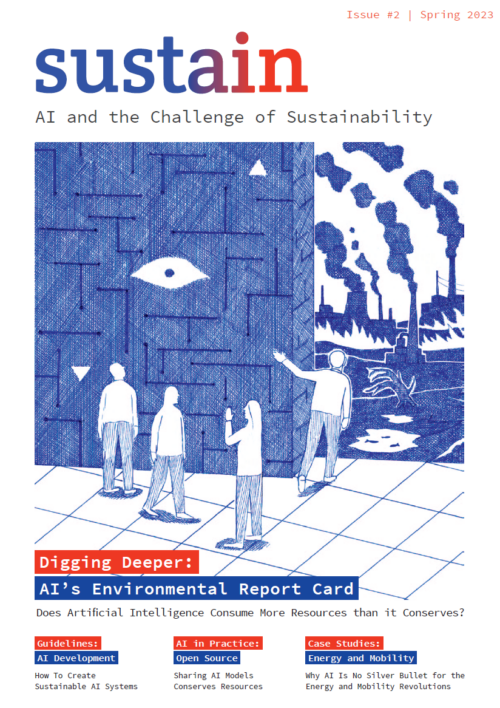AI and the Challenge of Sustainability: The SustAIn Magazine’s new edition
In the second issue of our SustAIn Magazine, we show what prevents AI systems from being sustainable and how to find better solutions.

The discussion surrounding Artificial Intelligence (AI) could hardly be more divided. On the one hand, it is becoming increasingly clear that AI systems only work through the exploitation of social and natural resources. On the other hand, AI continues to be seen as a solution for complex societal reform projects such as the transition to renewable energies and the mobility revolution. Neither the potential of AI nor the dangers and damaging consequences associated with it can be ignored. Overly sanguine AI fantasies remain unhelpful. We have to examine the entire lifecycles of AI systems if we want to assess their sustainability. We must stop only asking about CO₂ emissions when examining the environmental effects of these systems. And we have to undertake a precise, comprehensive and impartial analysis of AI systems if we are sincerely interested in ensuring the sustainability of AI.
Right now, big tech companies set the standard for the development of AI systems, but from OpenAI’s ChatGPT to Google’s PaLM or AI-based moderation tools by Meta and other platform providers, their products are far from being sustainable. Political representatives who hail AI as a one-fits-all solution tend to forget that AI consumes lots of resources. But it’s up to us to make digitalization sustainable. Read background reports, interviews with experts and standpoints on these topics in the new SustAIn Magazine.

Step by Step Towards Sustainable AI
The sustainability of an AI system depends on many decisions taken during its lifecycle. At the SustAIn project, we have developed criteria that help us illustrate which steps should be heeded (page 6).
Deploying Open Source Against Megalomania
The development and training of AI systems are energy-intensive. Sasha Luccioni and Irene Solaiman from Hugging Face explain how their startup tackles this problem. The platform features open-source AI systems that are also sustainable from a social and economic perspective (page 14).


CO₂ Avoidance or Resource Depletion?
AI systems are touted to speed up the transition to renewable energies and a more sustainable mobility. We recalculated if Artificial Intelligence consumes more resources than it conserves. More on page 33.
Read the second issue of SustAIn Magazine to get eye-opening insights into AI systems and learn interesting facts about them.
„SustAIn“ is a joint project by AlgorithmWatch, the Institute for Ecological Economy Research (IÖW), and the Distributed Artificial Intelligence Laboratory at the Technical University of Berlin. It is supported by the Federal Ministry for the Environment, Nature Conservation, Nuclear Safety and Consumer Protection (BMUV) based on a decision of the German Bundestag.
Read more on our policy & advocacy work on ADM and sustainability.

